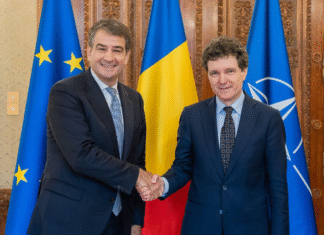Trump’s Peace Plan: An Analysis of Language and Influence
In a recent article by The Guardian, it has been suggested that former President Donald Trump’s peace plan may have been drafted in Russian or heavily influenced by the Russian language. This observation stems from a close analysis of the document, which reportedly contains a significant number of "Russisms" and awkward phrasing that may hint at Russian origins or influences.
The assertion is striking, considering the complexity and sensitivity surrounding international peace agreements. Throughout history, peace plans have often been products of geopolitical maneuvering, requiring clarity, precision, and cultural nuance to satisfy all parties involved. The proposal attributed to Trump, however, appears to lack this finesse, leading experts to speculate about its origins.
The term "Russisms" refers to phrases or structures that derive directly from the Russian language. Such linguistic characteristics can reveal much about the influences behind a document. In the case of Trump’s peace plan, these elements seem to indicate that the language used could stem from a translation or reinterpretation process that prioritizes Russian linguistic conventions over standard English expressions. This raises questions about the authorship of the document and its intended audience.
Furthermore, the notion of awkward phrasing, labeled as "stângace," points to potential translation issues or a lack of fluency in the intended language. In diplomatic communication, misleading or clumsy language can lead to misunderstandings and mistrust among negotiating parties. Given the high stakes of peace negotiations, effective communication is crucial. If the underlying text of Trump’s proposal is indeed riddled with these linguistic pitfalls, it could jeopardize the very objectives it aims to achieve.
Importantly, this inquiry into the language of Trump’s peace plan interlinks with broader discussions about the role of language in diplomacy. Language is not merely a tool for communication; it shapes perceptions and influences how ideas are received. Reports about the language choices in Trump’s document imply a deeper examination of the connections between geopolitical narratives and the linguistic frameworks that support them.
The potential implications of a Russian-influenced peace plan could resonate beyond merely structural flaws in language. It invites speculation into the relationship between Trump’s administration and Russian interests during his tenure. Given the controversies surrounding Trump’s presidency, especially concerning his interactions with Russia, the possibility that a peace plan could be influenced by Russian terminology or style raises eyebrows.
As the geopolitical landscape continues to evolve, understanding the nuances of communication becomes increasingly vital. Scholars and analysts alike must closely examine the language and rhetoric surrounding such agreements. This analysis not only illuminates the power dynamics at play but also sheds light on the subtle ways language can shape foreign relations.
In conclusion, the insights derived from The Guardian’s analysis of Trump’s peace plan unveil the importance of language in diplomatic efforts. By recognizing the possible Russian influences—both in terms of vocabulary and expression—we gain a broader understanding of the complexities involved in negotiations aimed at fostering peace. As we look ahead, attention to linguistic subtleties may prove as crucial as the political and strategic considerations that drive international relations.






